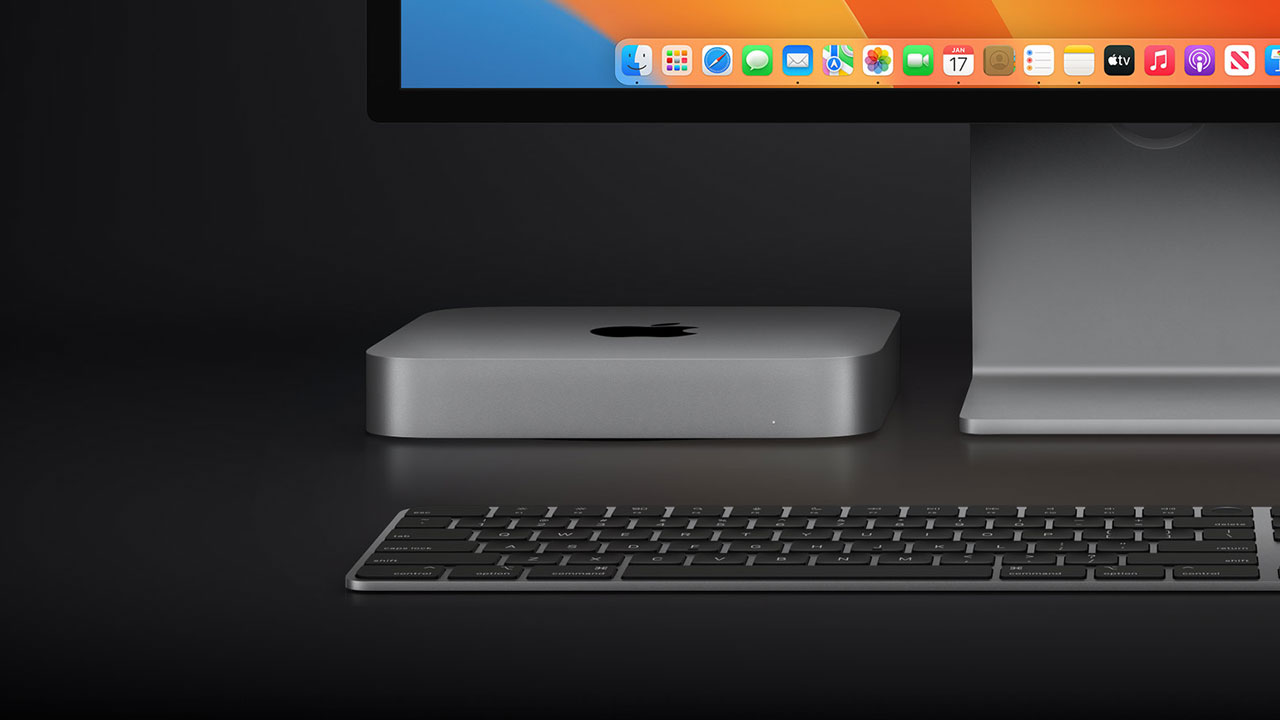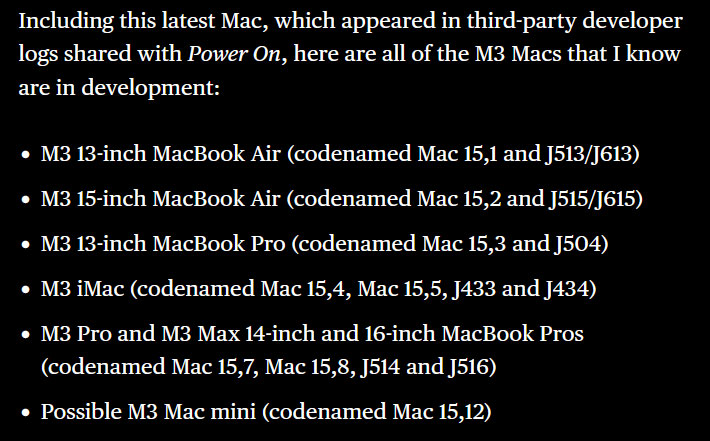Apple's Base M3 SoC Reportedly Won't Increase CPU or GPU Core Count
Spotted in a new Mac Mini, the SoC purportedly has 4P + 4E cores, 10 GPU cores, and 24 GB RAM.

Leaked information about another new Mac under test at the Apple Campus has been published by Bloomberg’s Mark Gurman. In his regular Apple-focused newsletter, Gurman claims he has new information about the base-level Apple Silicon M3 chip. Thr technology reporter asserted that this SoC would feature eight CPU cores, ten GPU cores, and 24 GB RAM.
Gurman reckons the newly uncovered base configuration M3 chip being tested at Apple’s HQ resides within a soon-to-be refreshed Mac Mini. Its eight CPU cores are split evenly between performance and efficiency cores (so, 4P + 4E cores). Moreover, he claims this SoC features 10 graphics processor cores and 24 GB of memory. With Apple Silicon devices, the SoCs come with memory on-chip, which is good for processor access and efficiency, but not so good for those who might wish to upgrade their system later.

Notably, the purported base-level M3 chip, highlighted above, has the same number of CPU and GPU cores as the base M2 it will replace. There will likely be other improvements present in the M3 so that Apple can boast about various advances with the new generation chips. It is hard to know exactly what changes will be delivered on an architectural level, but one thing that looks quite certain is a move to TSMC's N3 (3nm-class) fabrication technology, which should provide improved efficiency and density.
According to the Bloomberg tech reporter, the story won't be the same for higher-tier M3 chips. Previous leaks and insider indications point to the Apple M3 Pro increasing core counts compared to prior generations, with 12 CPU and 18 graphics cores. Meanwhile, next-generation Mac power users will want to seek out the M3 Max, with a purported 14 CPU cores and over 40 graphics cores.

If you are a happy user of the Apple Mac platform, you will naturally wonder when Apple will roll out its first Macs with the M3 processor. Current indications are that there will be a big Mac launch event not too far from now – in October. Reports suggest that Apple’s Mac business is currently amid a double-digit quarterly decline, so the arrival of the M3 can’t come soon enough to rekindle interest from upgraders and new converts.
Get Tom's Hardware's best news and in-depth reviews, straight to your inbox.

Mark Tyson is a news editor at Tom's Hardware. He enjoys covering the full breadth of PC tech; from business and semiconductor design to products approaching the edge of reason.
-
bit_user Both M1 and M2 used the same process node (TSMC N5), which has gotten cheaper since the M1 shipped. TSMC's N3 node will be more expensive, so it's understandable they want to keep costs down on the base configuration.Reply -
thestryker While I'm not a fan of apple in any way I hope this isn't a sign of the entire line. It would be a shame for them to not be moving the architecture forward in any meaningful way.Reply -
bit_user Reply
Maybe it's Apple's version of tick tock? The M1 and M2 had roughly the same microarchitecture and process node, but generally more cores and faster clocks. If they improve the architecture and shrink the process node, in this generation, it won't matter if core counts are somewhat stagnant.thestryker said:While I'm not a fan of apple in any way I hope this isn't a sign of the entire line. It would be a shame for them to not be moving the architecture forward in any meaningful way.
ARM's newly-announced X4 has 10-way dispatch, which is even wider than Apple's current P-cores:
https://fuse.wikichip.org/news/7531/arm-introduces-the-cortex-x4-its-newest-flagship-performance-core/
The X4 still has a smaller reorder buffer than Apple's, but it's going big on caches and that's another one of Apple's traditional advantages.